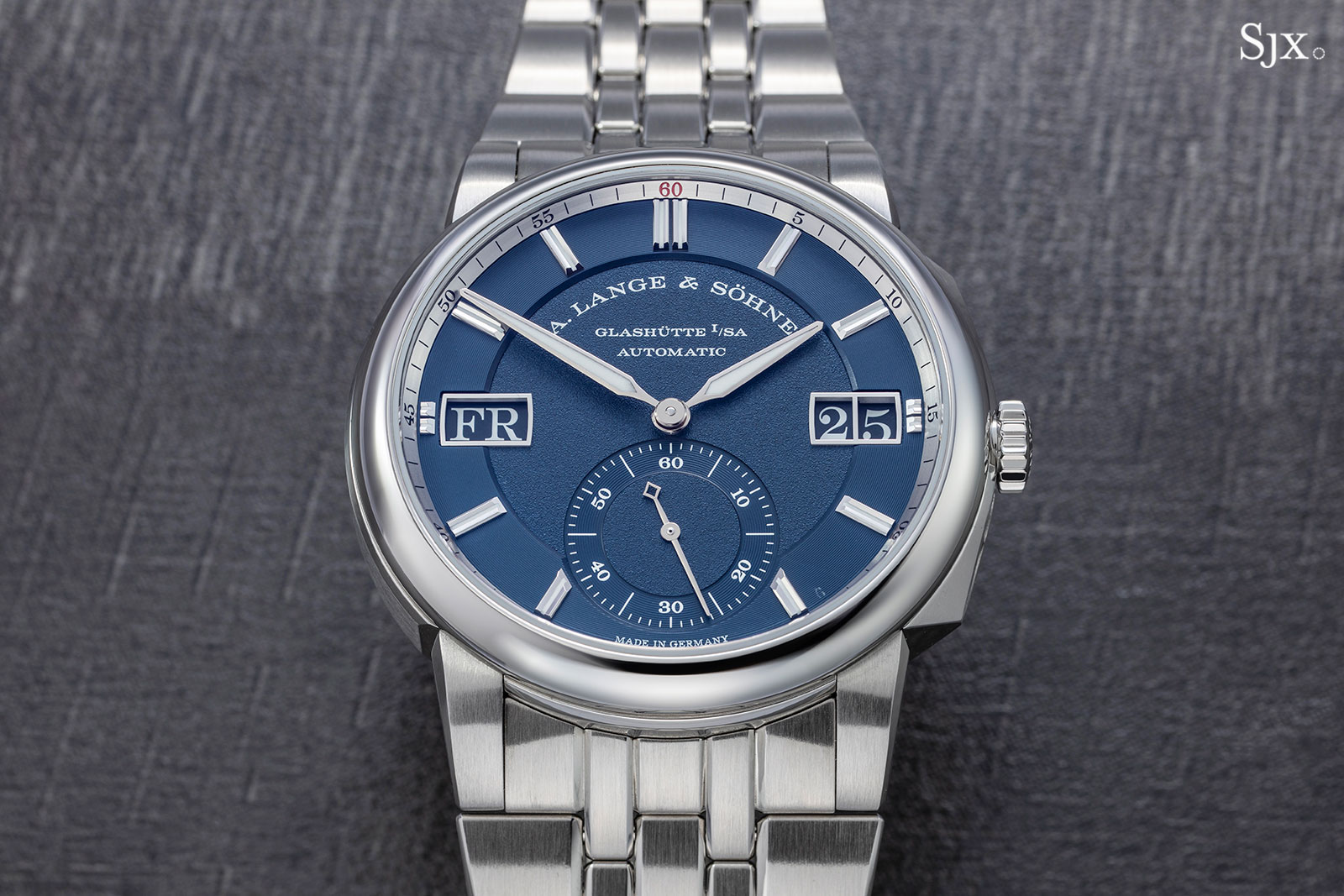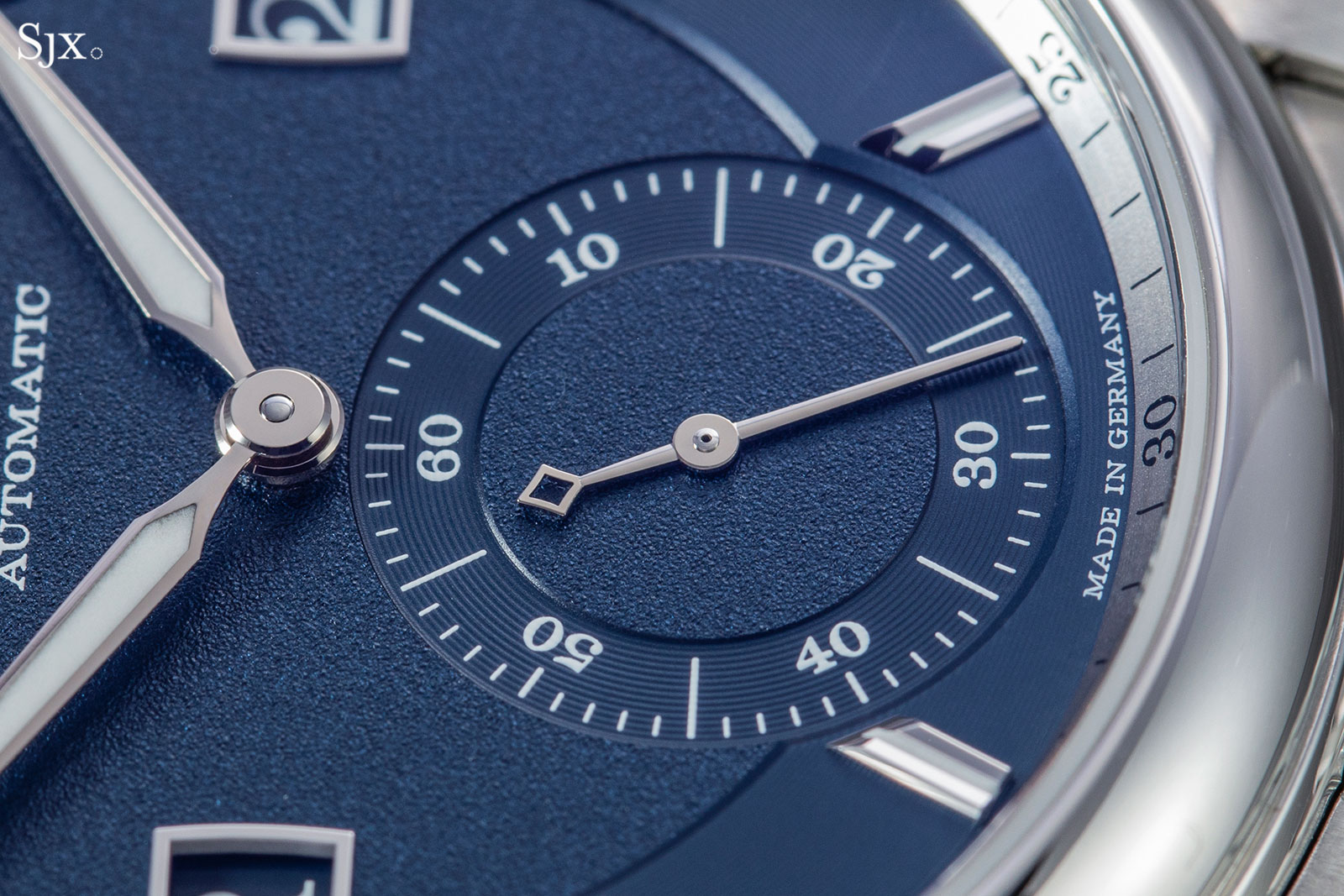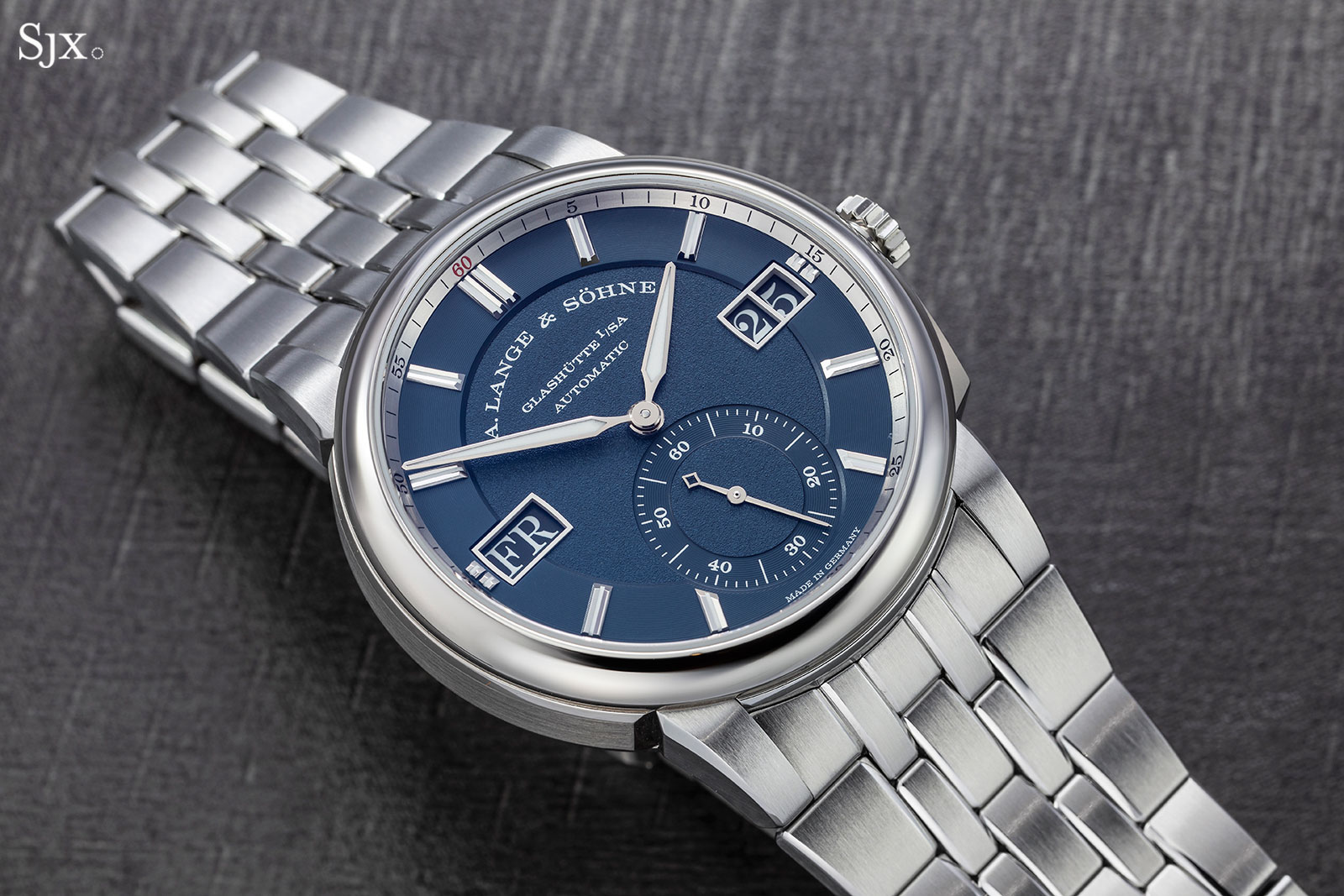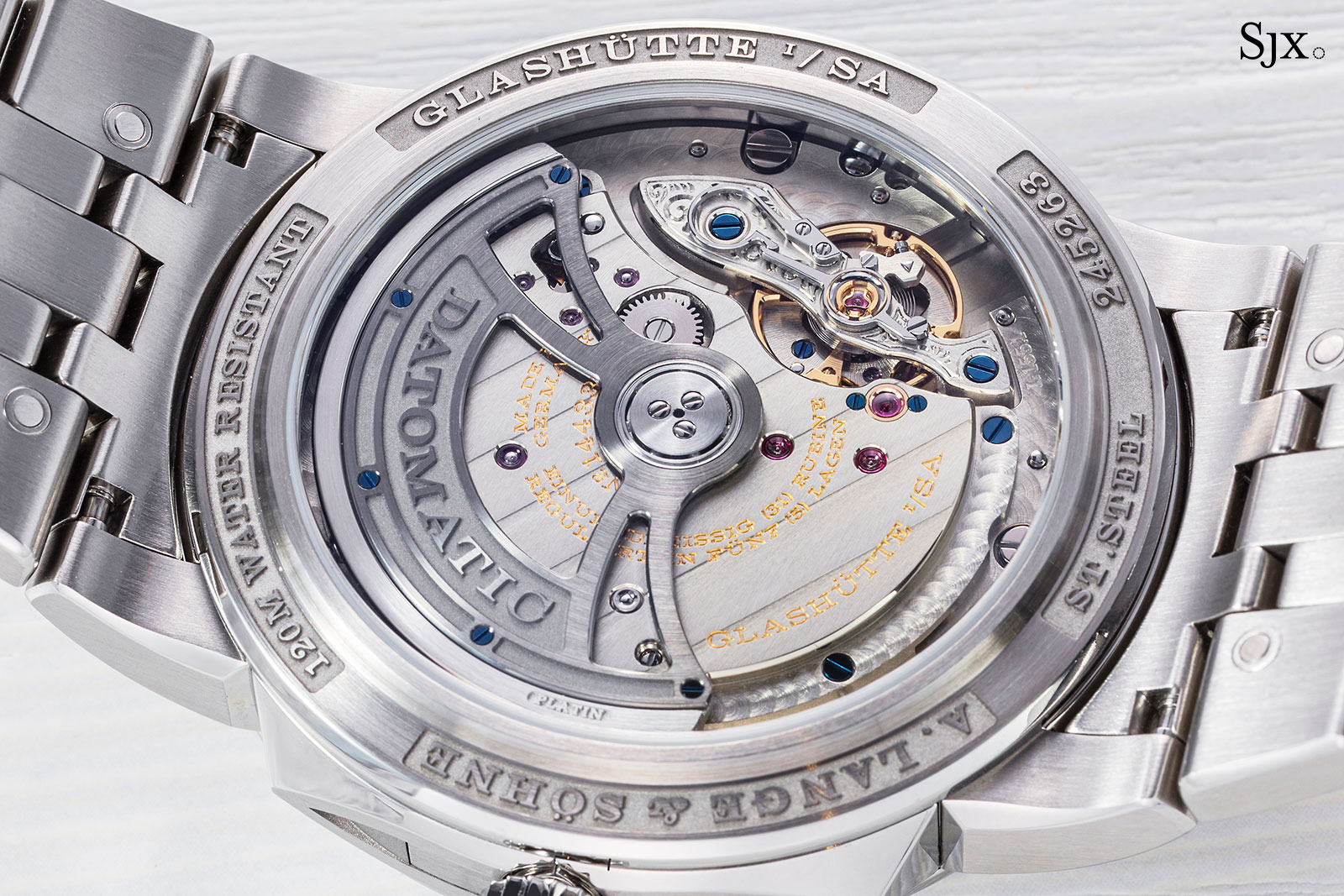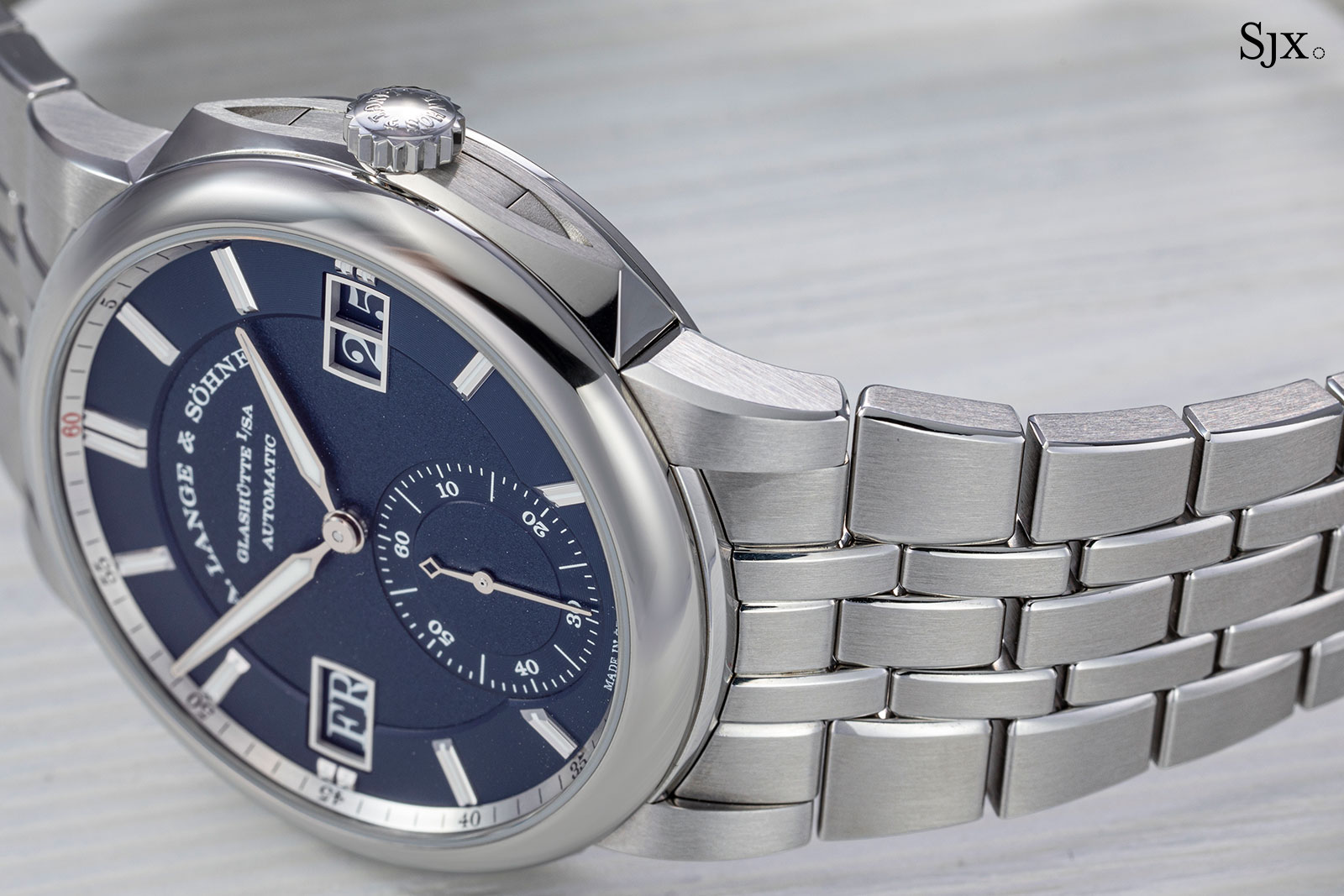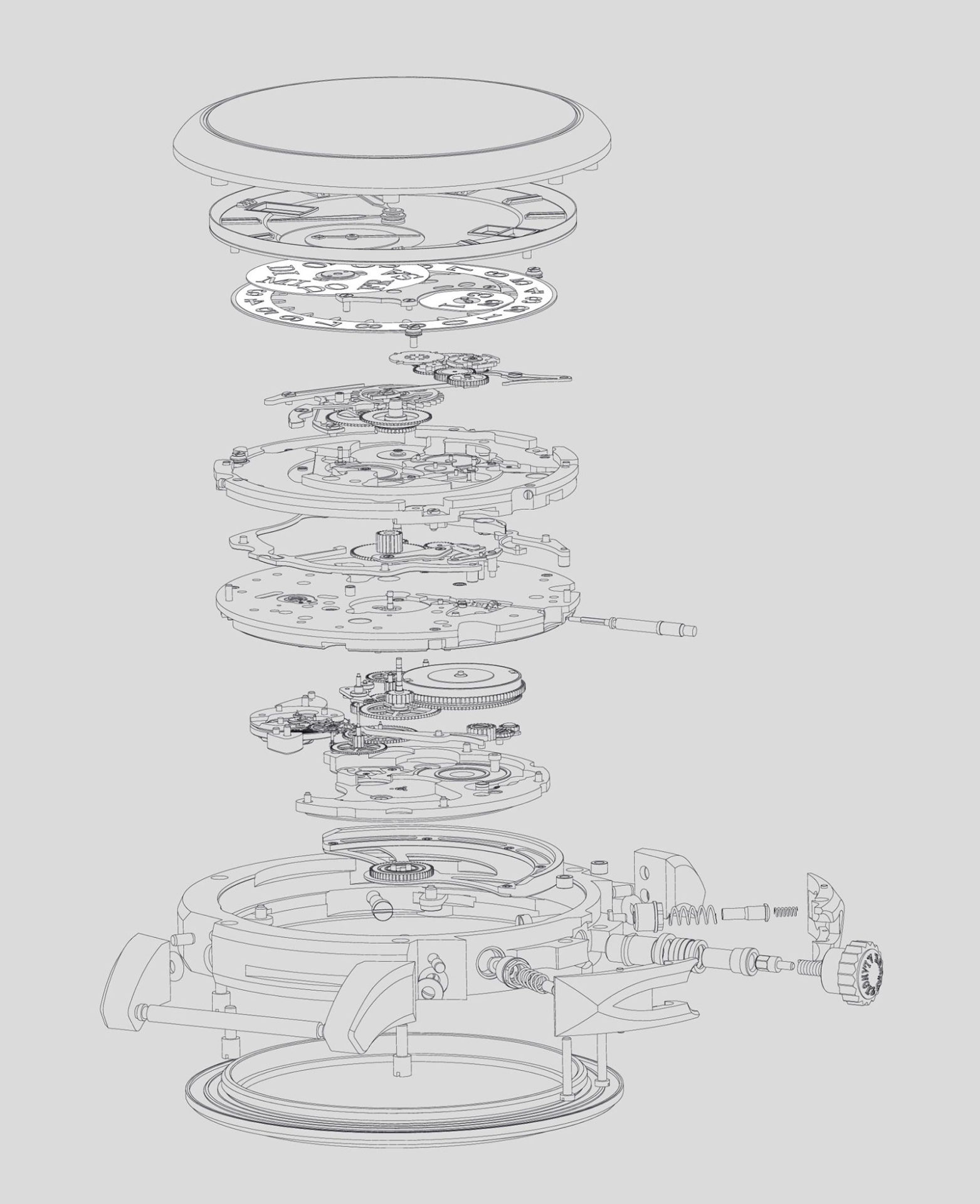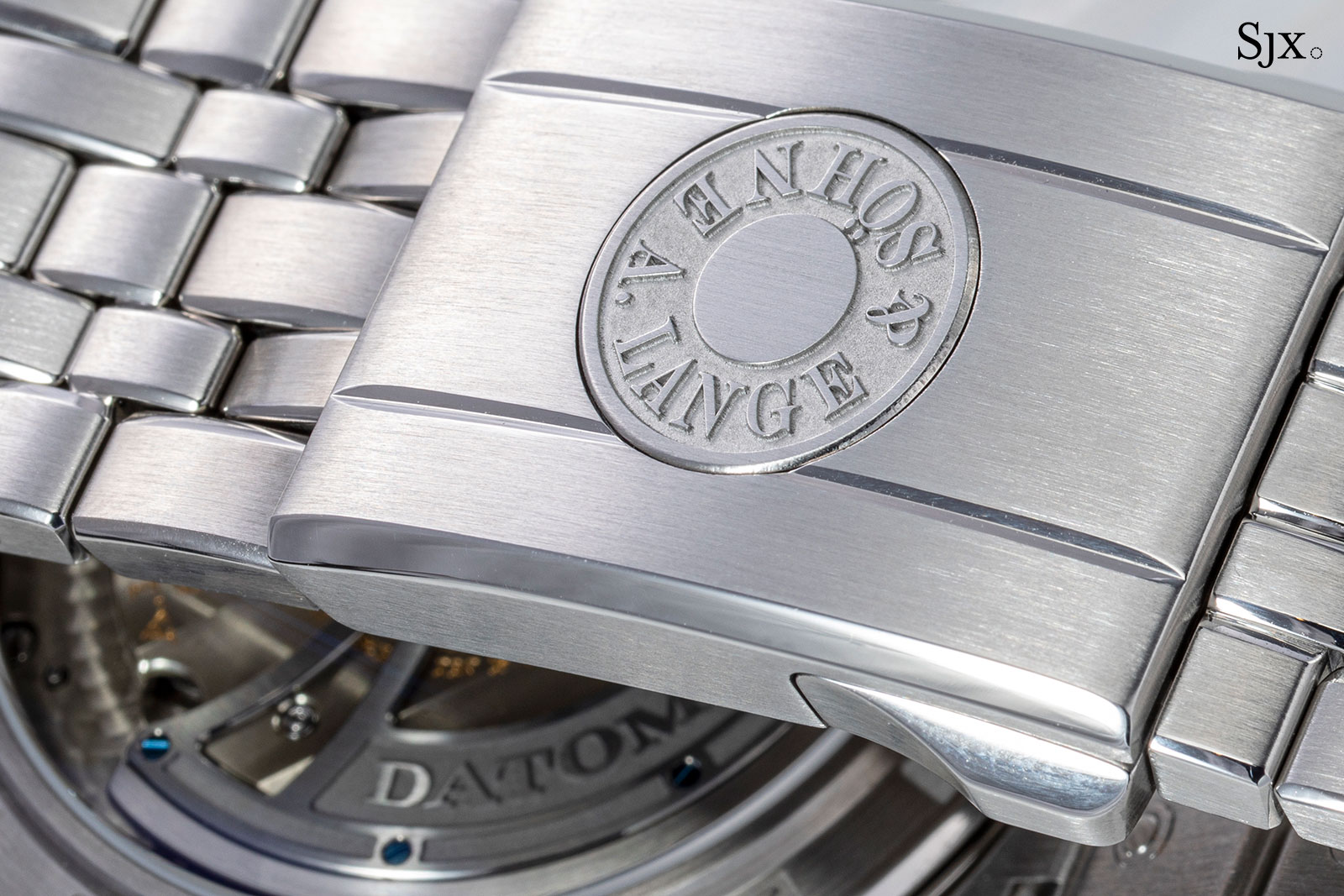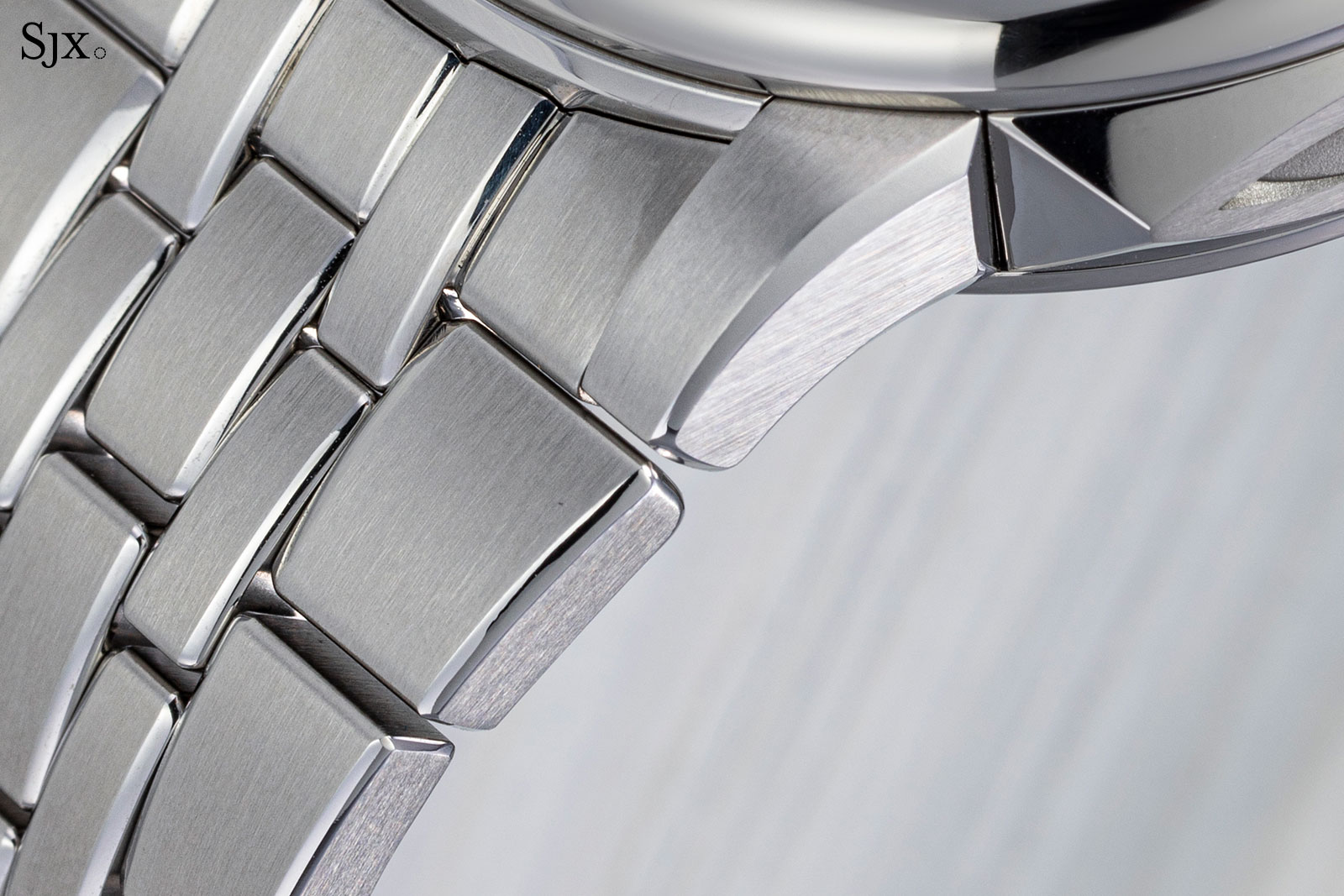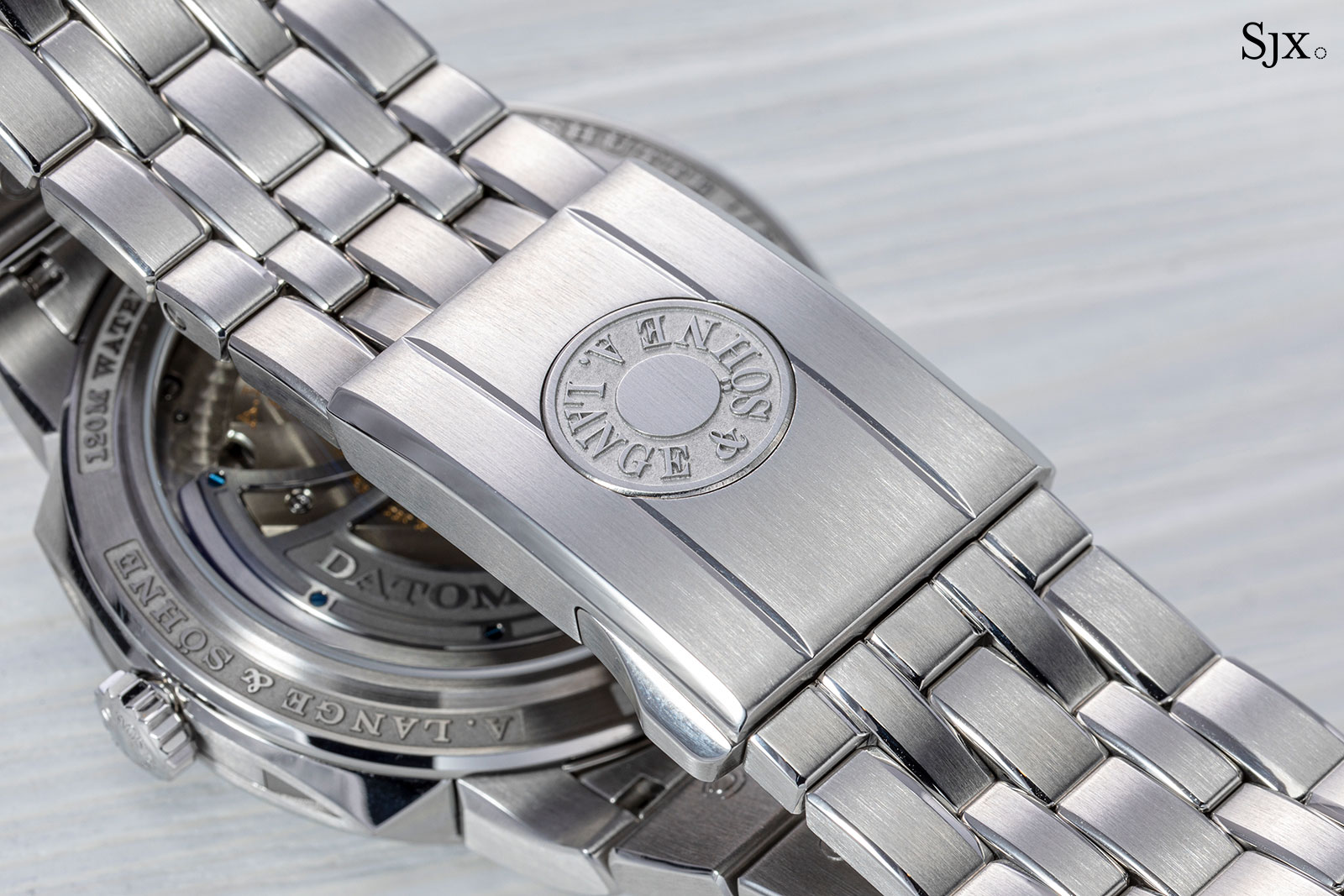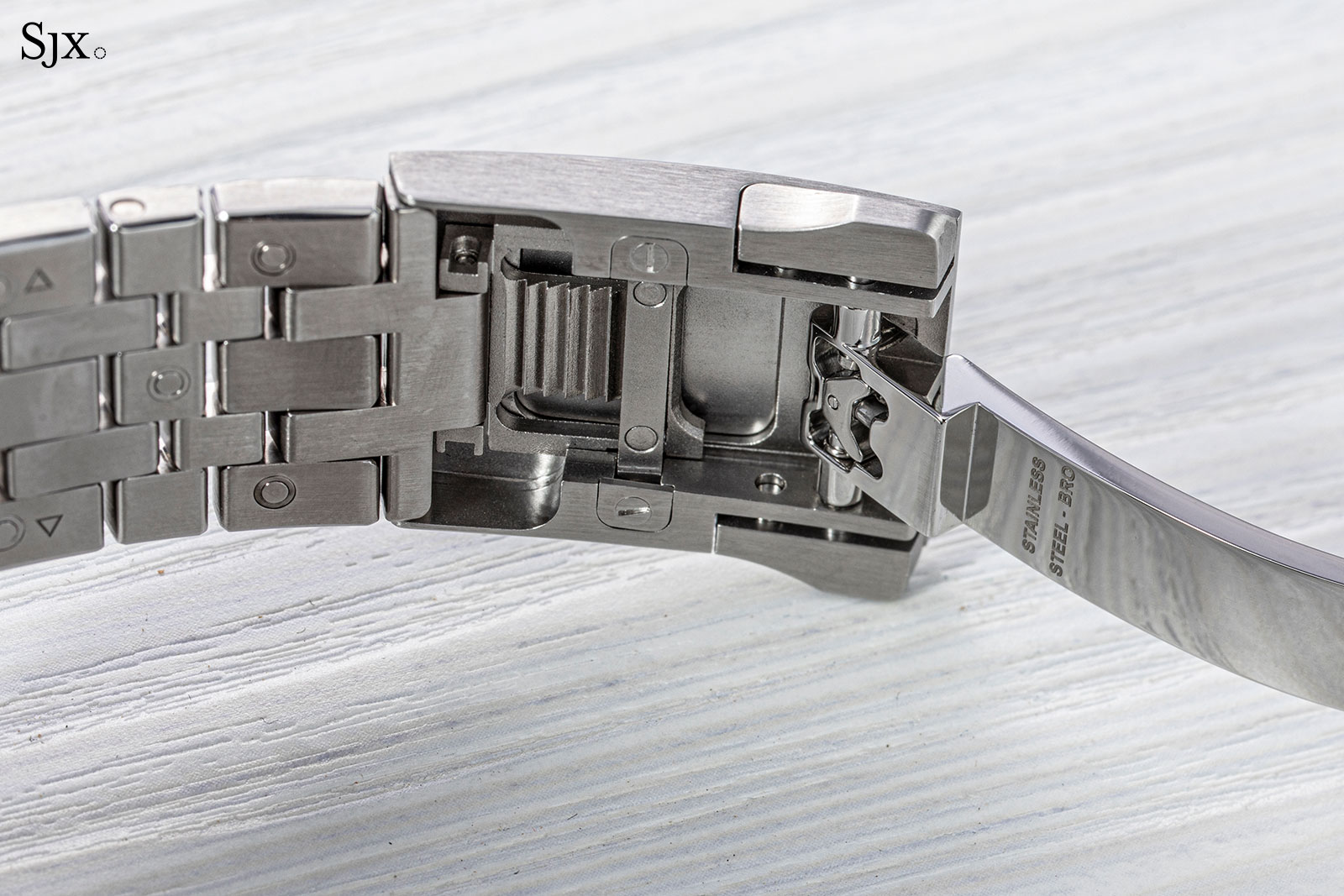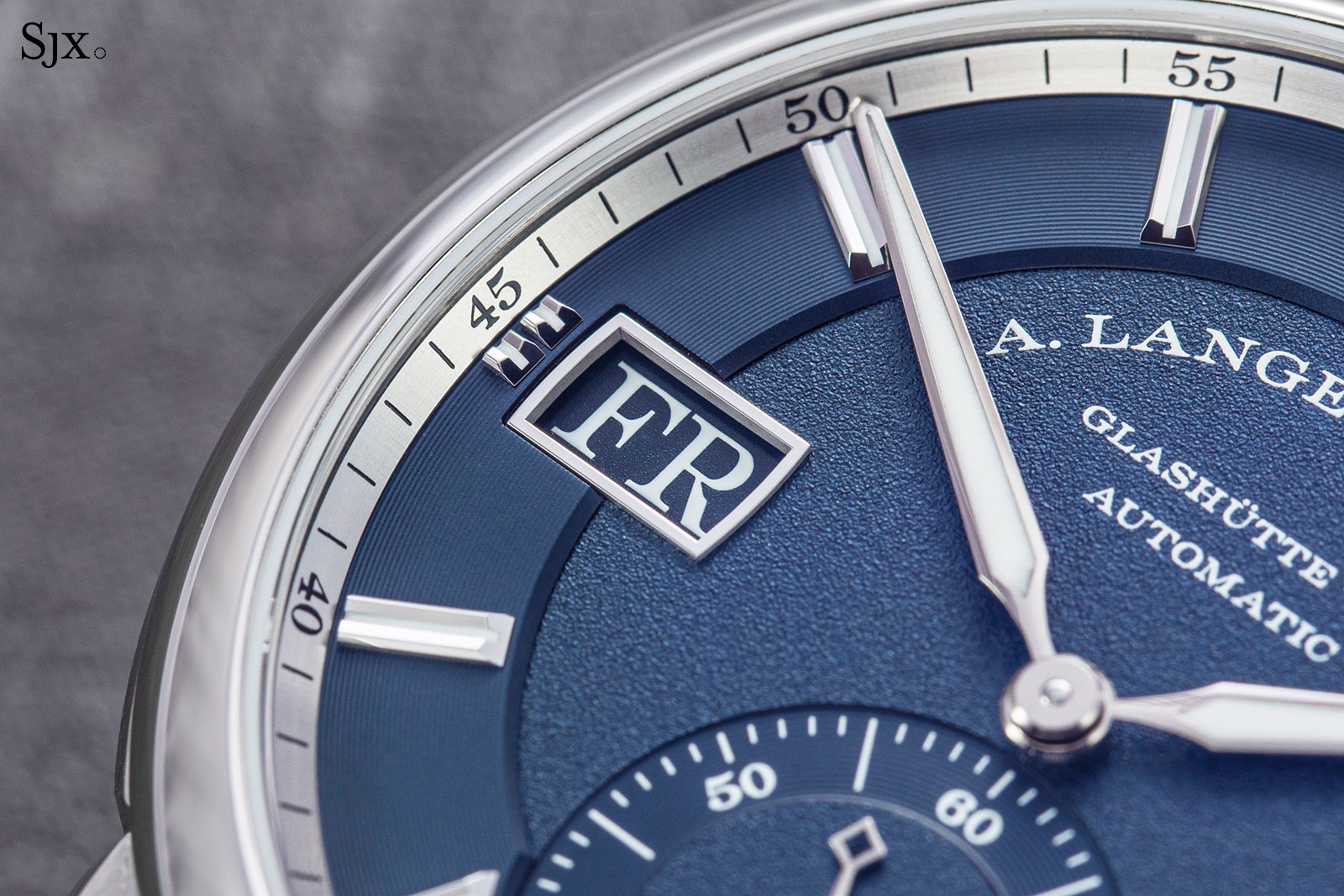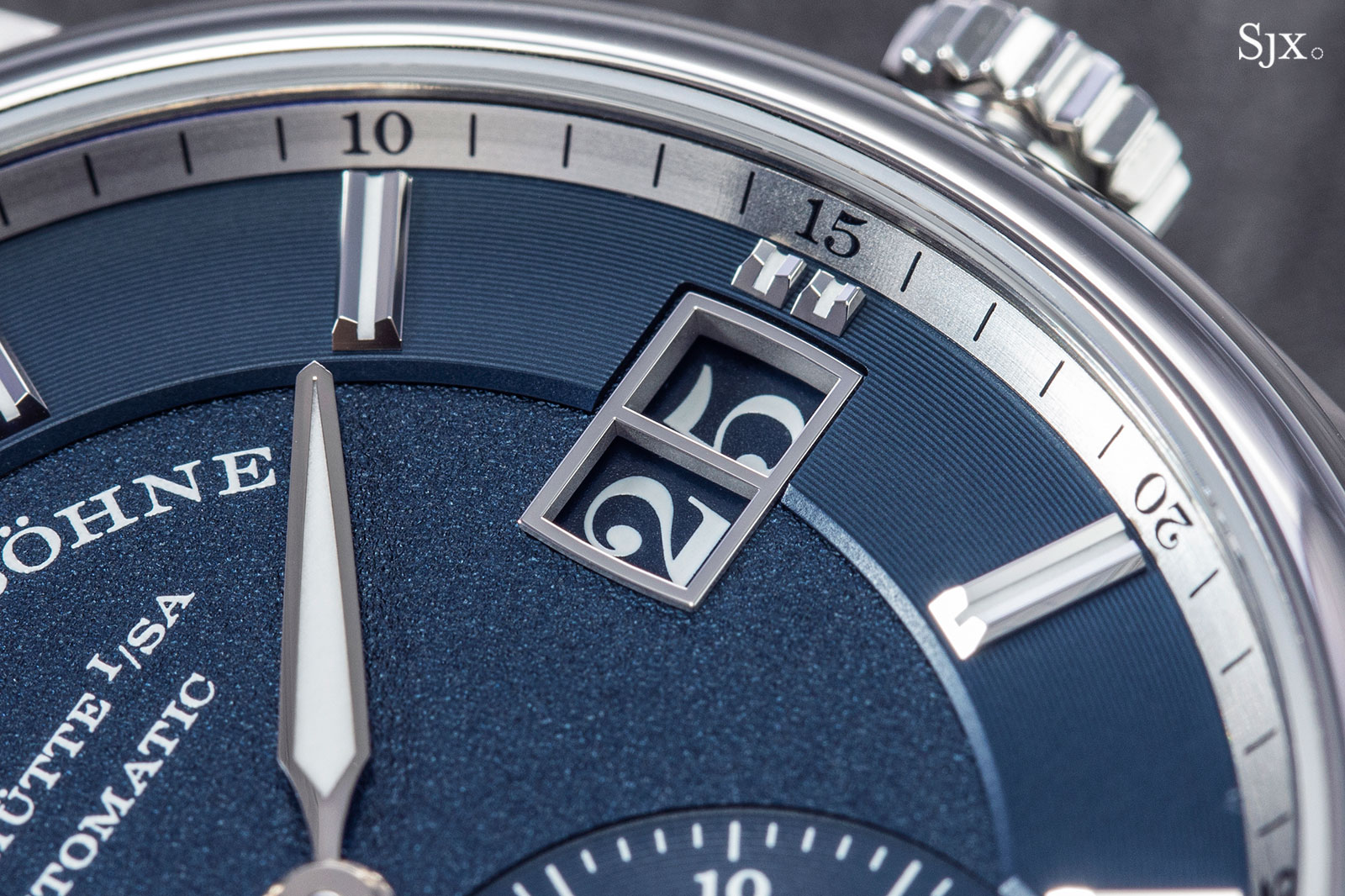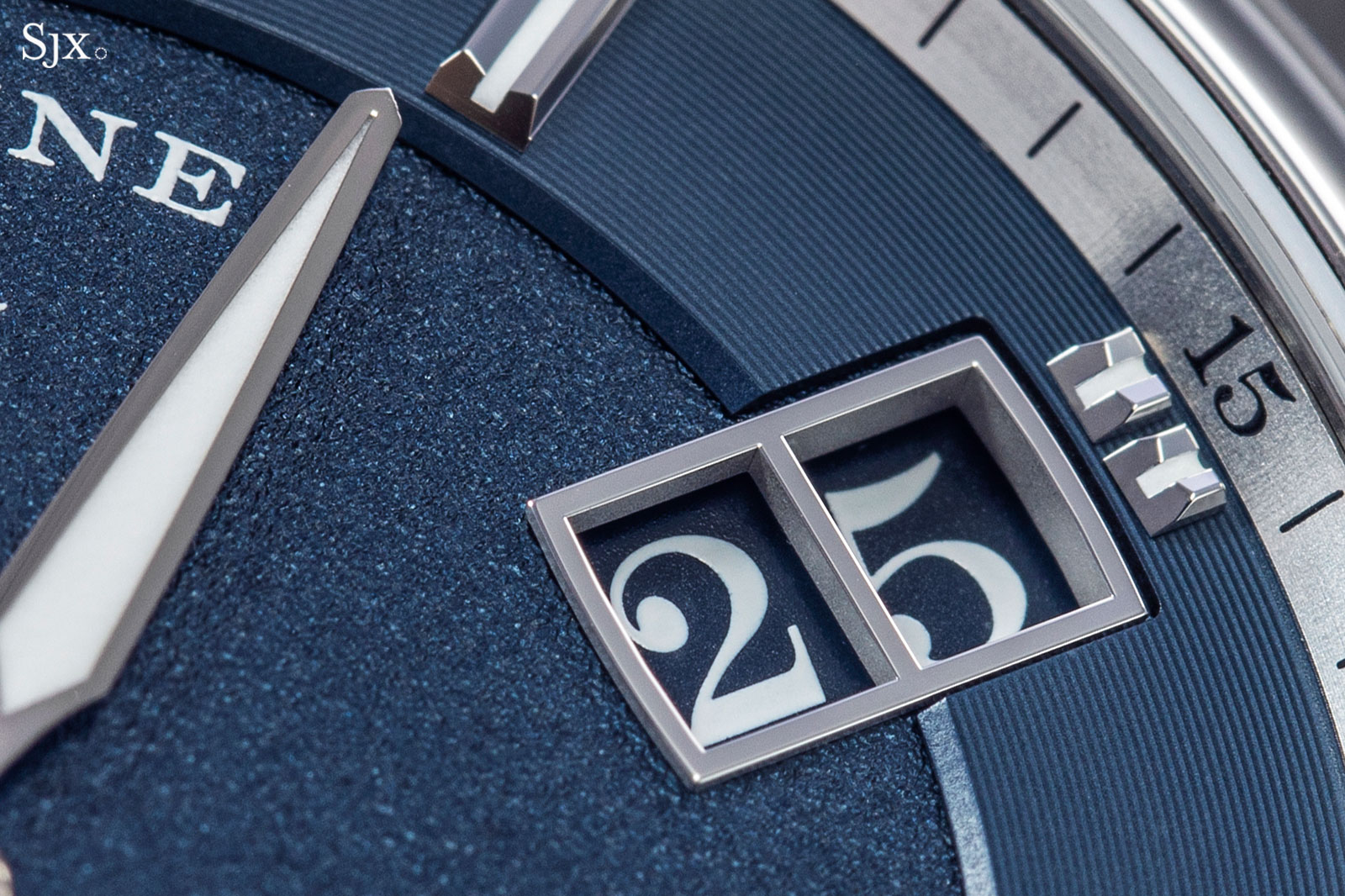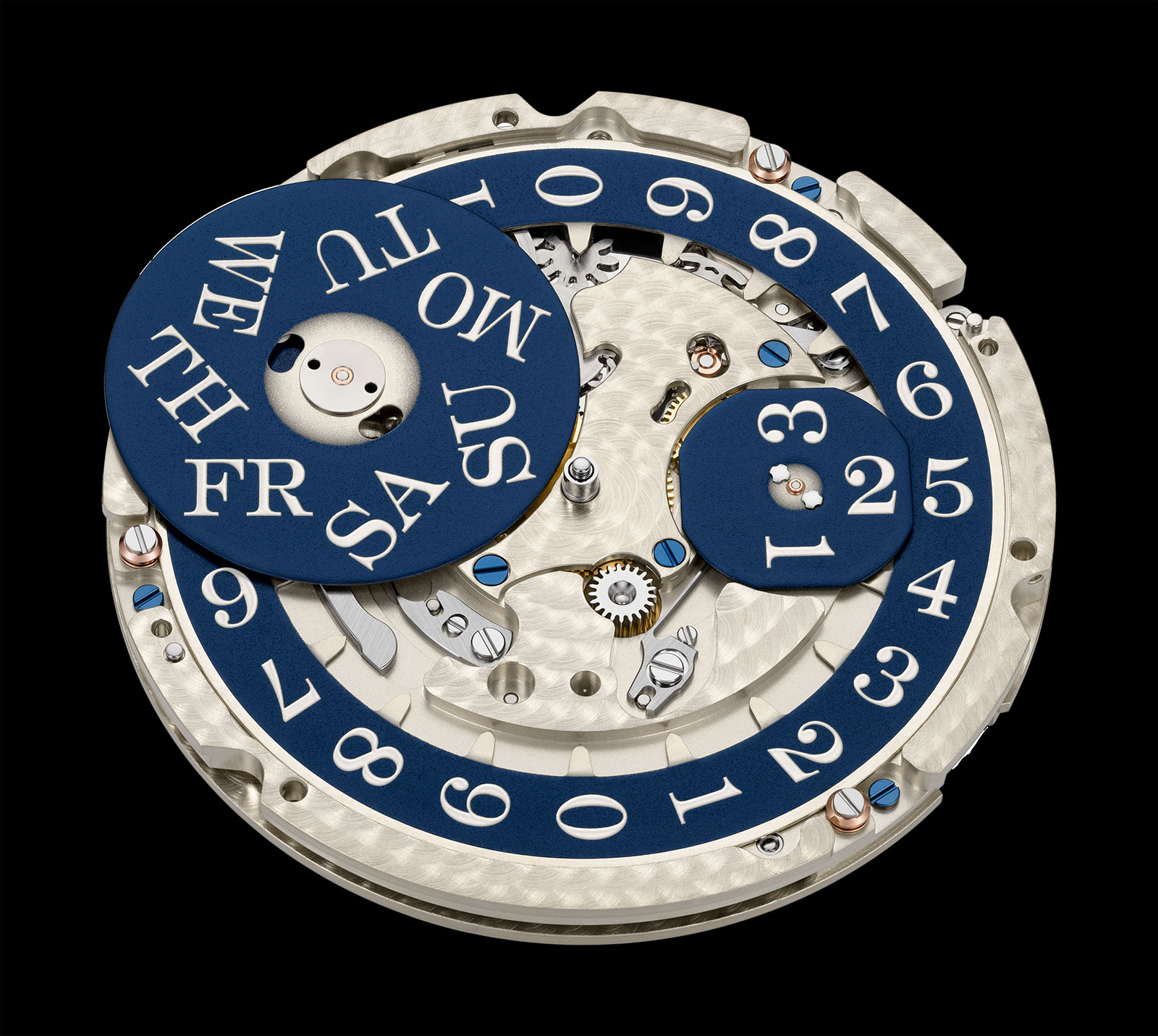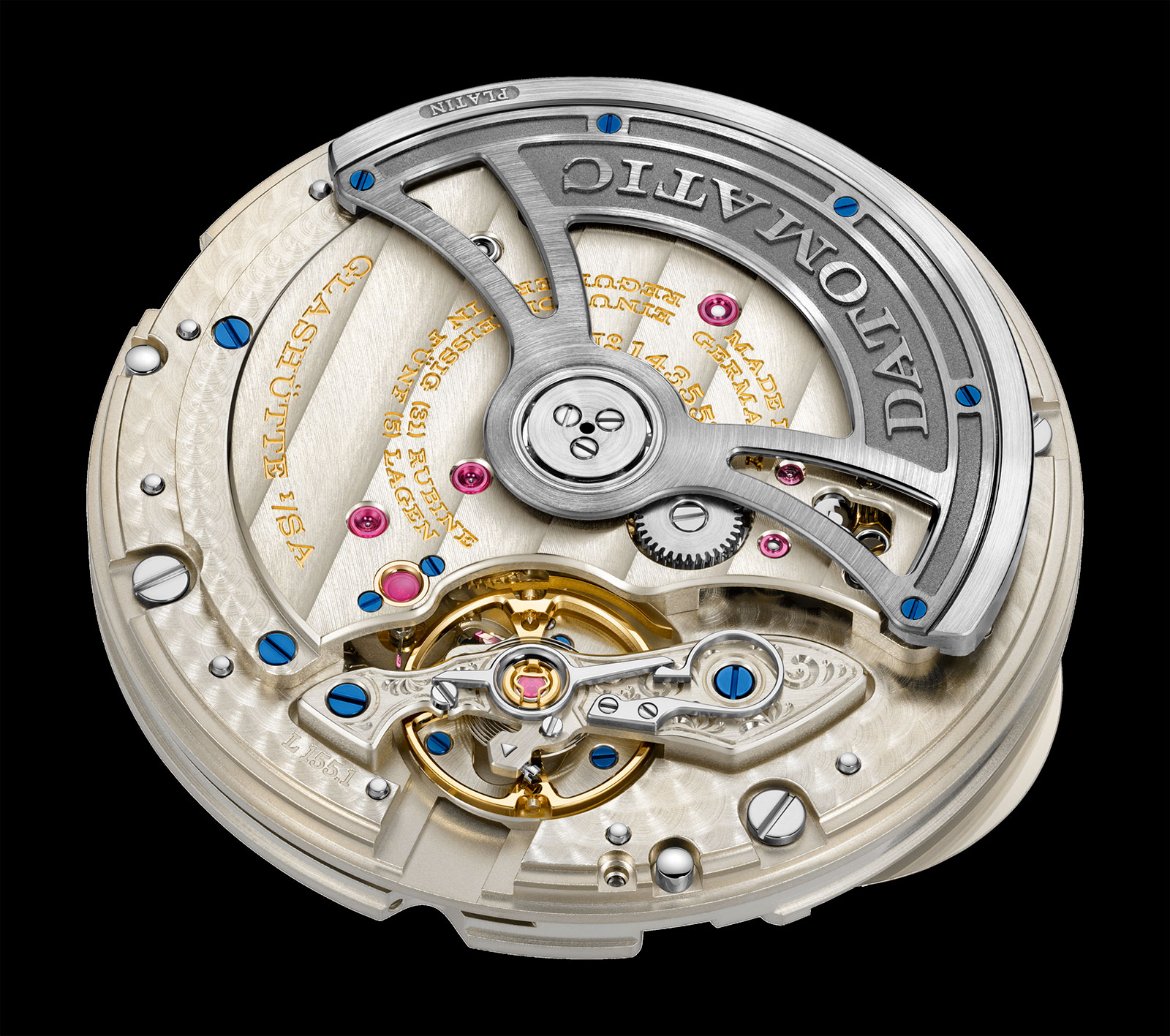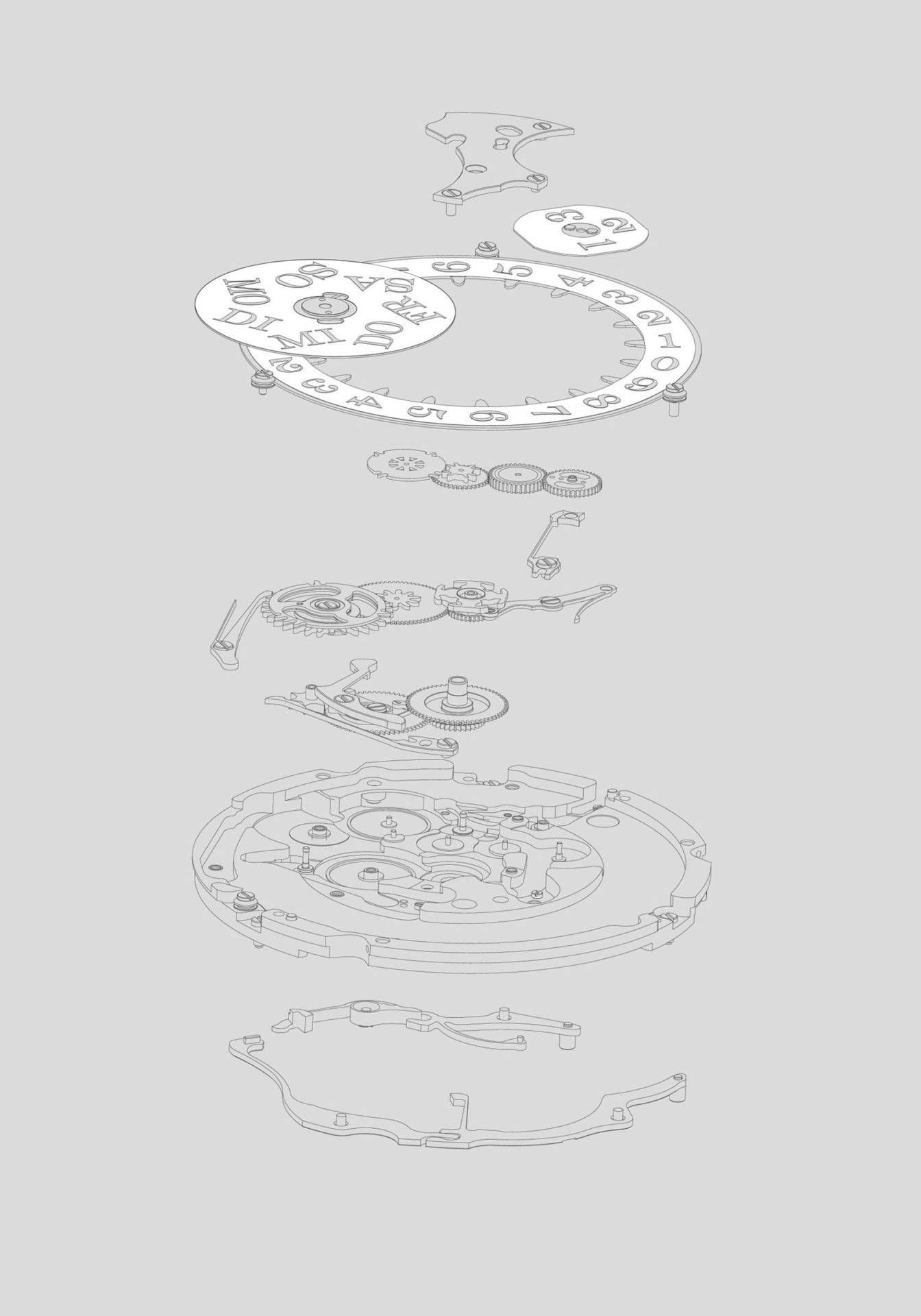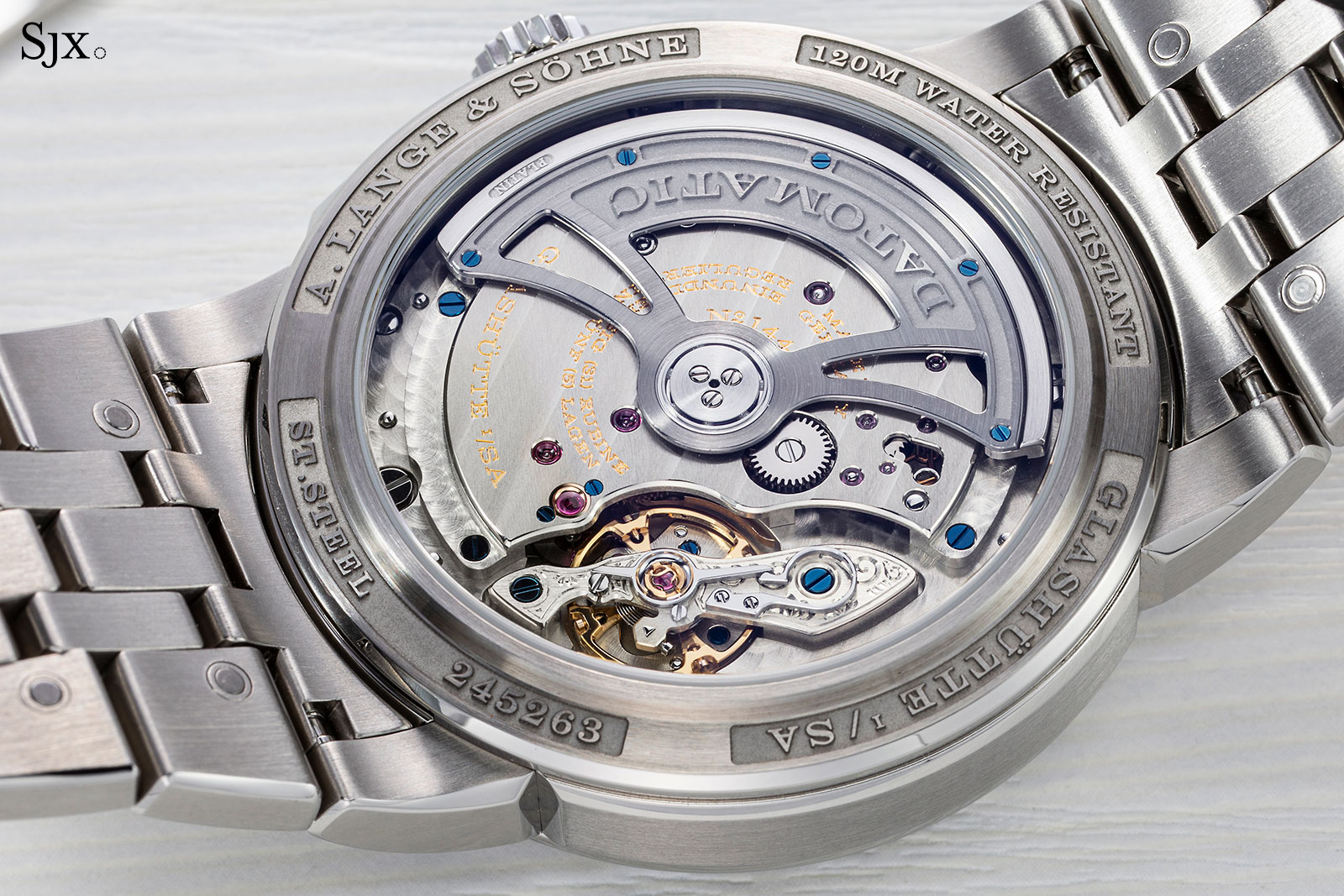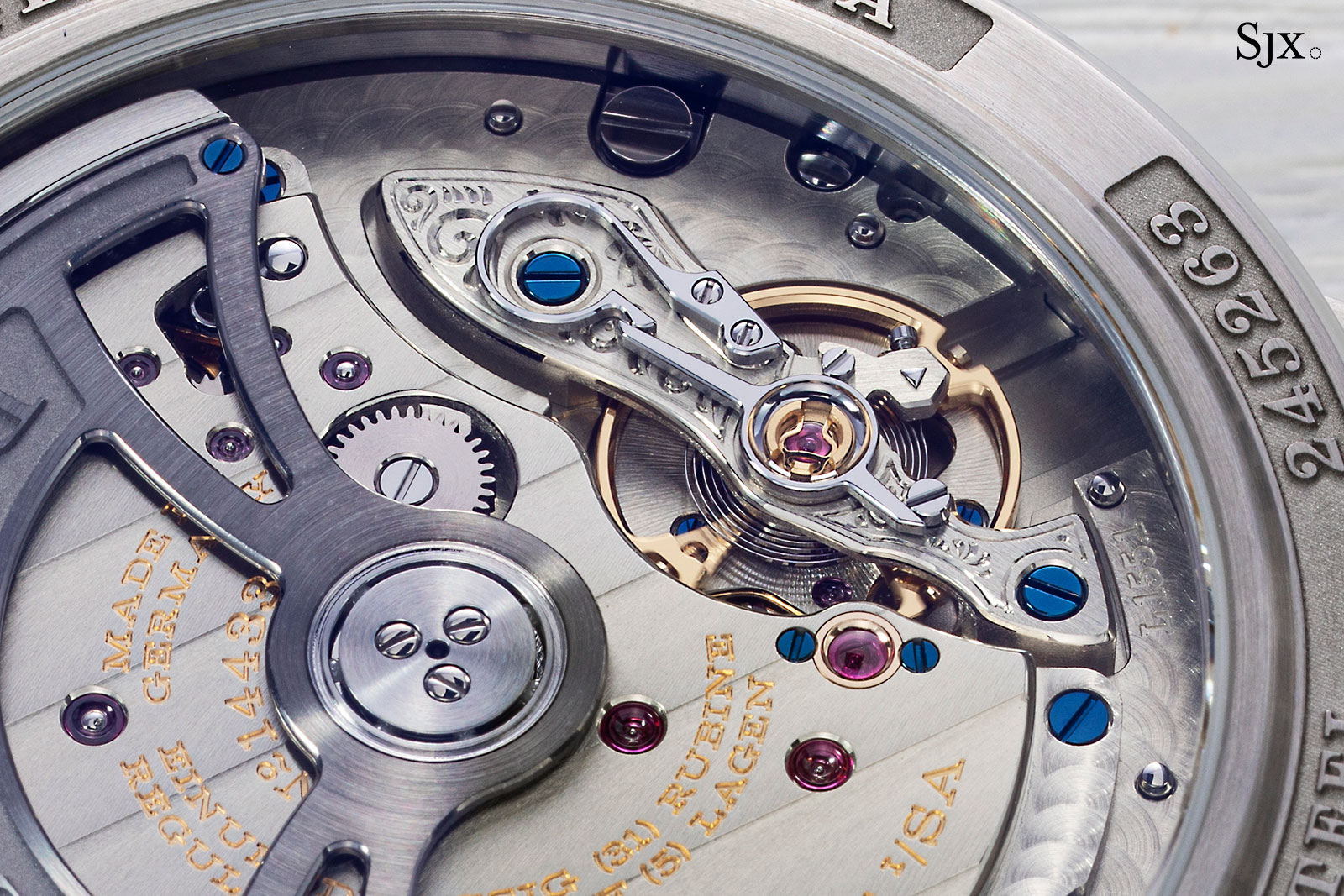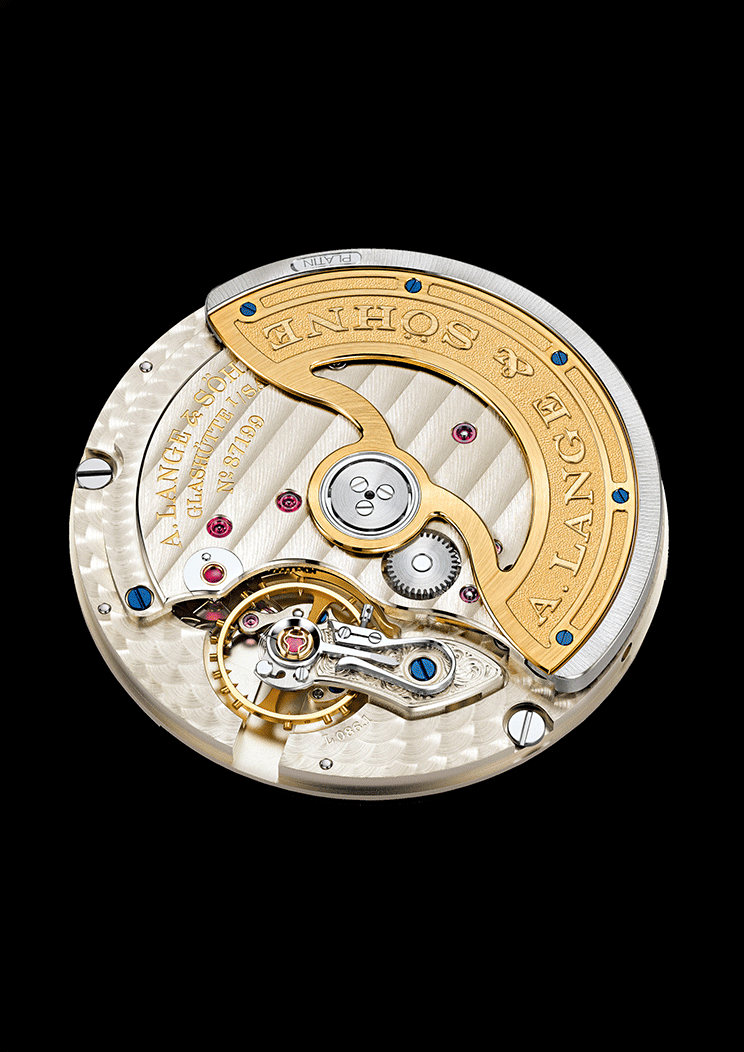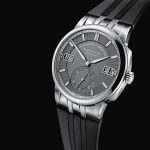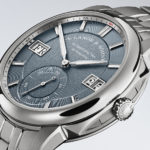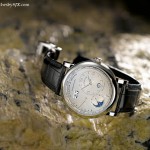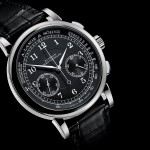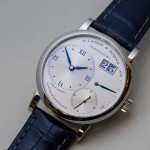In-Depth: A. Lange & Söhne Odysseus Datomatic
The sports watch, finally.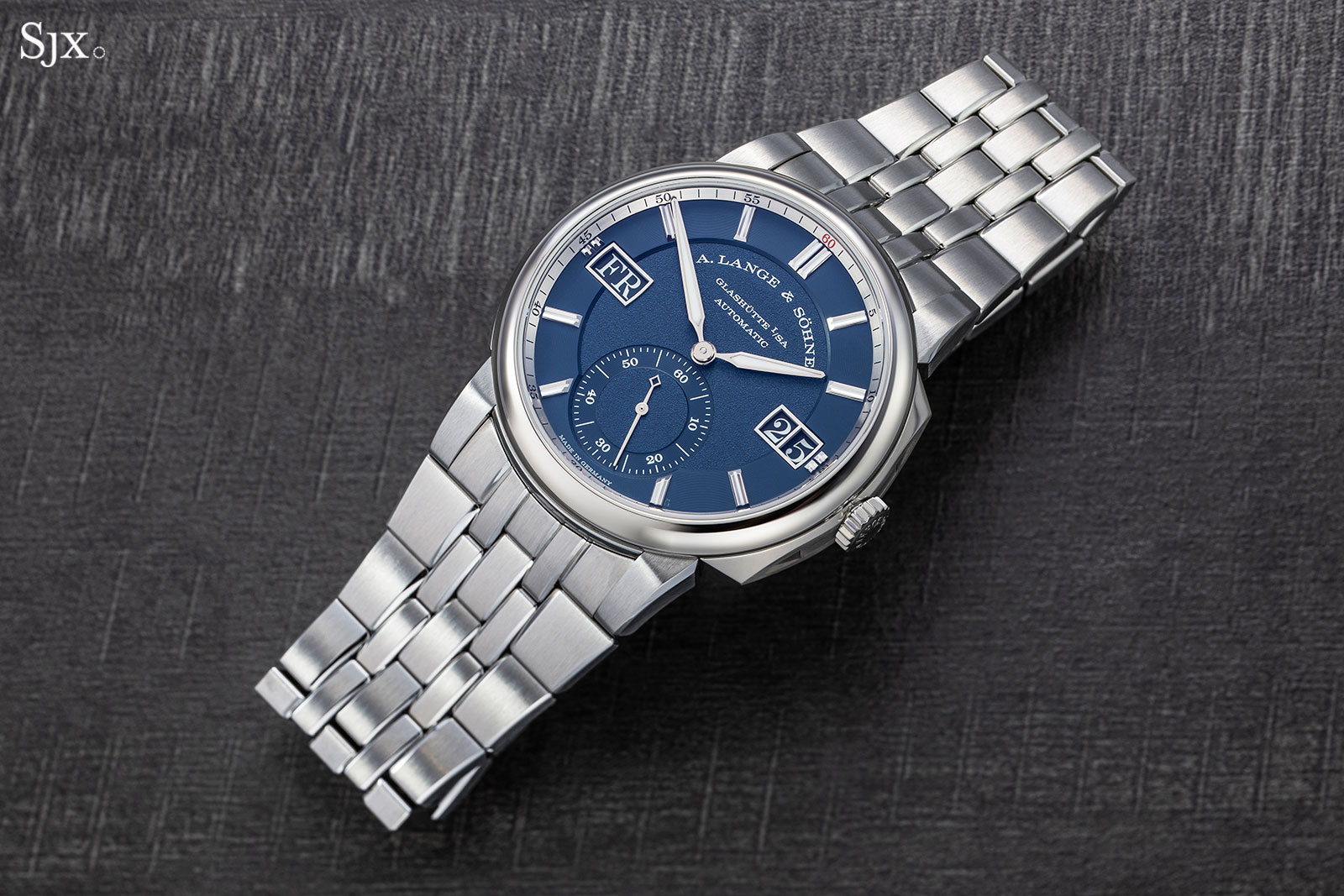
It’s been an open secret for years that A. Lange & Söhne has been working on a sports watch, ever since the time of its founding chief executive Gunter Blumlein, so the latest launch is not a surprise. Ideas percolate for a long time at Lange: the digital time display, for instance, was first mooted in 2001, but only introduced in 2009 with the Zeitwerk.
And now it is has finally arrived. Named Odysseus Datomatic, the watch is a day-date that’s the first in a new line of sports watches of the same name. It’s a 40.5mm watch in steel, rated to 120m, and powered by a new automatic movement.
Initial thoughts
I like and respect Lange tremendously, because its products are all engineered and finished well. Despite being a largely mainstream brand owned by a luxury group, Lange has managed to retain its characteristic quality. I do find some of the watches needlessly complicated or over designed, but the fundamental quality is unquestionable. For that reason, I hoped I would like the sports watch. And I do, but not the bracelet.
I spoke with Lange chief executive Wilhelm Schmid just before the launch, and he summed up the Odysseus: “We have not changed our fine watchmaking. It’s typical Lange, but it took us a long time to find the face and find the design.”
The watch – minus the bracelet – looks like a Lange, which means it’s serious looking, a bit plain, but obviously high quality from the way the small details catch the light. On the wrist the Odysseus sits well, it’s modestly sized at 40.5mm in diameter and 11.1mm high, though the bracelet is too bulky.
Unfortunately, the Odysseus is being launched with a bracelet only, though a strap option is planned for the future. The bracelet is well intentioned, and equipped with useful features, but tries too hard to be an integrated bracelet. Visually it is too wide and doesn’t blend into the case. A bracelet with narrower end links would work better, as would a strap.
A Greek myth
The new line gets its name from the mythical Greek king Odysseus, protagonist in Homer’s poem Odyssey, which tells the story of how the king got lost on the way home after the Trojan War. Odysseus encountered monsters, traitors, bandits and other inconveniences along the way, resulting in a 10-year trip.
But in a strange twist of fate, like Odysseus frequently encountered on his journey home, the name was used for a line of watches before, by Lange’s sister company, Jaeger-LeCoultre.
From the mid 1980s until the late 1990s, Jaeger-LeCoultre was in its Greek mythology phase, where all of its lines were named after people and places of Ancient Greece. Amongst them was Heraion, Gaia, Lyre, and of course, Odysseus, which was probably best known for including a perpetual calendar model that utilised the IWC calendar module invented by Kurt Klaus.
Odysseus returns as a watch described by Lange as “sporty-elegant”. The watch sits closer to the “elegant” end of the spectrum design-wise, but the bracelet, not. The styling is conservative, but it is obvious even at arm’s length that the fit and finish, inside and out, is well done. The Odysseus is not an entry-level watch in any sense.
The case
Made of steel and mostly brushed, the case is essentially a slightly more sculpted and muscular version of the standard Lange watch case, though constructed in a significantly more complex manner.
So the look is familiar, but the details are more elaborate than on the standard cases. The case has lots of contrasting brushed and polished surfaces, as well generous polished, bevelled edges.
The large protrusions on either side of the crown are not crown guards, but the pushers for the calendar display. The button are big but relatively flat, so accidental activation is probably unlikely. Though the buttons give the watch a sporty flavour, but they also throw off the visual balance of the watch.
The construction of the case is notably complex for something relatively simple in shape, with some notable details. Most prominent are the screw-down crown and screw-down case back, both common enough features on sports watches. Also interesting is the bezel that’s secured to the case middle by screws, for better water-resistance. The result is a case rated to 120m.
More unusual is the construction: the standard Lange case has lugs that are welded onto the case middle, but the Odysseus has the lugs secured to the middle with two screws. Now fairly popular in watchmaking, such screwed-on lugs make removal quicker, which in turn makes refinishing easier.
The bracelet
The Odysseus is available only on a bracelet – for now – that’s well made but bulky, especially where it joins the case. The end links are wide to give it the look of an integrated bracelet, but it is not quite so, mainly because the usual Lange lugs don’t allow for that.
Finishing of the bracelet, right down to the individual links, is excellent. Like the case, the links are finished with a combination of brushed and polished surfaces; it’s obvious effort was put into refining the finish.
Usability is also excellent thanks to two key features.
The first is the adjustable buckle that contains a ratcheting adjustment mechanism that’s released by pressing the round emblem in the centre of the clasp. The mechanism allows the effective clasp length to be adjusted in steps, forwards and backwards, up to 7mm. It’s a useful function, although it results in a chunky clasp that has a big, inelegant button in the middle.
The ratcheting adjustment feature might seem familiar, and for good reason. It was invented by a specialist bracelet maker, Brogioli in Ticino, and has been used by other watch brands, including Glashütte Original in its discontinued Sport Evolution line.
Equally convenient is the smart quick-release mechanism for removing the links that was first developed by IWC and then tweaked by Cartier, which uses it in the recent Santos bracelet (both IWC and Cartier are sister companies of Lange. The back of each link has two small, recessed buttons – depress both and the bar securing the link slips out, allowing the link to be removed. This can be done with a toothpick, making it quick and painless.
The dial
Like the case, the dial is in the usual Lange style, and quite reminiscent of the Saxonia with its baton indices.
The symmetry of the dial is pleasing, and legibility, excellent. I only wish the lettering and logo at 12 o’clock was smaller. And though the colour is well done, it feels like the brand is trying to hard to keep current with the fad of blue dials. That being said, other dials colours will be offered in the future.
Unlike standard Lange dials that are made of silver, this is made of brass, though the hands and hour markers are made of solid gold.
The detailing is, however, excellent. The dial is executed on several levels, with varying surface finishes that work together well. The chapter ring for the hours has a stamped concentric guilloche, otherwise known as azurage, while the recessed central portion is has a granular finish.
Oversized date, and day
Both the calendar displays are impressively large, especially relative to the size of the watch and movement. In the usual Lange manner, the date mechanism is elaborately and robustly done. It’s contained in a discrete module that’s made up of 99 parts, with lots of large, sturdy levers and springs.
The module sits on top of the base movement, and together they form the L155.1 “Datomatic” movement. Development of the L155.1 movement was formally started in 2015, as indicated by the first two numerals of the calibre, and variants of it will be used in future models of the Odysseus line.
Visually it’s similar to most other Lange movements, though upon closer examination, several details stand out. The most obvious is the rotor, which has its central portion made of ARCAP – a nonferrous alloy mostly made of copper and nickel – and plated in black rhodium for decorative effect. It’s used instead of the 22k gold used in other automatic Lange movements, but the outer rim is still platinum, the norm for the brand.
Having been designed for a sporty watch, the movement has technical details catered to that purpose, executed in a technically-oriented manner that’s the norm at Lange.
The key features are in the escapement and regulator. First, the balance is larger than usual, having its four poising screws sitting in recesses on the rim of the balance – a first for the brand.
That means the screws sit flush with the rim, allowing the balance wheel diameter to be larger than in a conventional Lange movement, which always has the screws extending out from the rim as it was in pocket watch movements. All things being equal, a larger balance wheel means greater inertia, leading to a more stable beat, even in the face of shocks.
According to Lange, the recessed screws also minimise friction due to air resistance, though I would think that is negligible relative to the gains in inertia.
Secondly, the inertia of the balance is further boosted by the higher frequency of 28,000 beats per hour (bph), or 4Hz. While the norm for most modern day movements, 28,800bph is a first for Lange, which usually has its movement running at 21,600bph.
Another feature catered to the purpose of the watch is the balance bridge, which extends over and across the balance wheel, being secured with a screw on each side of the balance. That contrasts with the balance cock of a conventional Lange that’s only secured on one side.
The balance bridge provides more stability for the balance wheel, which is why it’s standard in all Rolex movements. But the balance bridge is still decorated exactly like the balance cocks in standard Lange movements, that is to say fully engraved.
But left unsaid by Lange, but obvious from a visual comparison, is the fact that the new L155.1 movement is derived from the L086.1 movement found in the Saxonia automatic watches, the entry-level self-winding watches of the brand.
The overall layout of both movements is identical when viewed from the case back – key elements like the escape wheel and going train jewels are in the same place – but several differences can be discerned.
Besides the rotor and balance bridge detailed above, another aesthetic tweak is the decoration: the L155.1 has wider spaced striping on the three-quarter plate, something not evident initially, but obvious once spotted.
And the L155.1 does away with the black polished steel cap for the escape wheel jewel found in the L086.1 – a shame as the cap is a pretty detail. Instead it’s replaced by a jewel held in a gold chaton secured by two screws, a trademark Lange feature. That being said, the escape wheel jewel is the only one in the L155.1 that’s secured by a chaton, which seems a bit stingy.
Lastly, the power reserve is also shorter on the new calibre, presumably the result the larger balance and higher frequency. That trims the power reserve to 50 hours, compared to the 72 hours of the L086.
Concluding thoughts
After understanding the various details of the watch, inside and out, it’s obvious to me that Lange spent a fair amount of effort in developing a watch that is a bit of a me-too product in terms of concept – a steel sports watch with a blue dial. But it was conceived with an attention to detail and technical refinement typical of the brand; no corners were cut.
As I wrote at the beginning, the watch itself is conservatively styled – most Lange watches are – but good looking enough. The bracelet design is a let down, and detracts from the watch. It’s not likely to be redesigned, but a rubber strap would be a big improvement.
The next element of the equation is the price, which feels a little bit higher than it should be. Not by much, but perhaps 15%. Even though most Lange watches are expensive watches, many feel like reasonably good value for the quality; the Odysseus doesn’t quite cross that hurdle.
And finally, the fact that is in steel. When I first heard about the sports watch, I thought it would be detrimental for the brand to produce one in steel, given the limited and one-off steel watches it has made in the past. But given how different the Odysseus is from the rest of the collection, it probably won’t matter.
Key facts and price
Odysseus Datomatic
Ref. 363.179
Diameter: 40.5mm
Height: 11.1mm
Material: Stainless steel
Water resistance: 120m
Movement: L155.1
Functions: Hours, minutes, seconds; day of week and date
Frequency: 28,800bph, or 4Hz
Winding: Automatic
Power reserve: 50 hours
Strap: Steel bracelet
Availability: At A. Lange & Söhne boutiques from early November, with retailers receiving it later in the year
Price: US$28,800, or €28,000 including 19% VAT
For more, visit Alange-soehne.com.
Correction October 25, 2019: The case back is screw down, not press fit, while the central portion of the rotor is ARCAP, not brass.
Addition October 26, 2019: Included the fact that first IWC and then Cartier created their own quick-release bracelet links that rely on a similar mechanism. And retail price in US dollars added.
Correction December 2, 2019: The ratcheting clasp is produced by Brogioli in Ticino, and not Dexel and stated previously.
Back to top.
